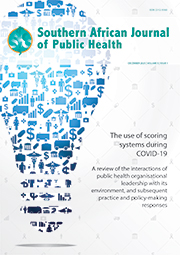Research

The evolution of SARS-CoV-2 testing in Africa: Observations from the first 1 million cases
Abstract
Background. The coronavirus disease 2019 (COVID-19) is a communicable respiratory disease in humans caused by severe acute respiratory syndrome coronavirus 2 (SARS-CoV-2), first reported in Wuhan City, China, in December 2019. Egypt reported the first case in Africa on 14 February 2020. COVID-19 rapidly spread globally, leading to its declaration as a global pandemic by World Health Organization on 11 March 2020. At the outset, only two laboratories, in Senegal and South Africa, could confirm SARS-CoV-2 virus in Africa.
Objective. To describe the evolution of testing for COVID-19 from the period of onset of the first case on 14 February to the day Africa reached 1 million cases.
Methods. Data on COVID-19 cases were collected from the Our World Data database. Data on SARS-CoV-2 polymerase chain reaction tests were collected from the Africa Centres for Disease Control (Africa CDC) database. Evolution of testing was tracked using 30-day intervals at days 30, 90, 120 and 150, from day 1 on 14 February 2020. Information on continental strategies for testing was taken from the Africa CDC.
Results. Data from 54 African countries were reviewed, with Tanzania excluded. The number of countries reporting cases increased steadily from 1 on 14 February 2020 to 15 by day 30, and 50 by day 60. By day 90, all 54 countries had reported cases. There was an initial slow increase in reported cases, with a sharp increase reported from day 120 onward, until the 1 millionth case. It took 120 days to reach 183 152 cases, and only a further 53 days to pass the 1 million case mark. The average stringency index rapidly peaked from 29% at day 30 to 78% by day 60, and began to slow down to 75% (day 90), 66% (day 120), 60% (day 150) and 57% by the millionth case. The number of testing laboratories increased from 2 at onset to 38 by 24 February. The number of tests increased from 778 by day 30 to 125 199 by day 60, 1 063 695 (day 90), 3 412 806 (day 120), 6 222 522 (day 150) and 9 397 756 by the 1 millionth case. Four continental strategies were implemented during the period under review.
Conclusion. Although the African continent started slowly, capacity to test for SARS-CoV-2 rapidly increased, with almost all countries localising testing early into the pandemic. Challenges still exist that require an adequate supply of affordable, easy-to-use testing methods with shorter turnaround times
Authors' affiliations
T Maruta, Africa Centres for Disease Control and Prevention
Y Kebede, Africa Centres for Disease Control and Prevention
Full Text
Cite this article
Article History
Date published: 2021-04-19
Article Views
Full text views: 1460

.jpg)


Comments on this article
*Read our policy for posting comments here